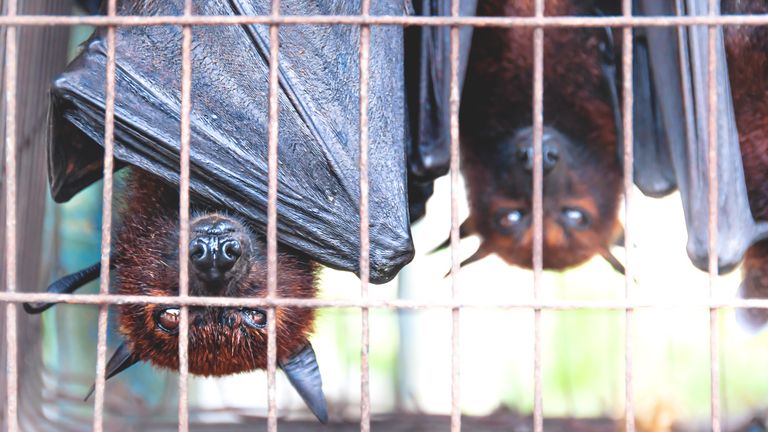Tories accused of corruption and NHS privatisation by former chief scientist
Exclusive: Boris Johnson’s ‘chumocracy’ is using Covid crisis to sell off health service by stealth, says Sir David King

Boris Johnson’s use of public money during the coronavirus pandemic ‘really smells of corruption’, Sir David King said. Photograph: Anadolu Agency/Getty Images
Fiona Harvey Environment correspondent
Tue 13 Apr 2021
Boris Johnson’s government has been accused of corruption, privatising the NHS by stealth, operating a “chumocracy” and mishandling the pandemic and climate crisis, by Sir David King, a former government chief scientist.
“I am extremely worried about the handling of the coronavirus pandemic, about the processes by which public money has been distributed to private sector companies without due process,” he told the Guardian in an interview. “It really smells of corruption.”
King contrasted the success of the vaccination programme, carried out by the NHS, with the failure of the government’s test-and-trace operation, which has been contracted out to private companies.
“The operation to roll out vaccination has been extremely successful, it was driven through entirely by our truly national health service and GP service – just amazing,” he said. “Yet we have persisted with this money for test and trace, given without competition, without due process … I am really worried about democratic processes being ignored.”
He said: “This is a so-called chumocracy, that has been a phrase used, and that is what it looks like I’m afraid: it is a chumocracy.”
Fiona Harvey Environment correspondent
Tue 13 Apr 2021
Boris Johnson’s government has been accused of corruption, privatising the NHS by stealth, operating a “chumocracy” and mishandling the pandemic and climate crisis, by Sir David King, a former government chief scientist.
“I am extremely worried about the handling of the coronavirus pandemic, about the processes by which public money has been distributed to private sector companies without due process,” he told the Guardian in an interview. “It really smells of corruption.”
King contrasted the success of the vaccination programme, carried out by the NHS, with the failure of the government’s test-and-trace operation, which has been contracted out to private companies.
“The operation to roll out vaccination has been extremely successful, it was driven through entirely by our truly national health service and GP service – just amazing,” he said. “Yet we have persisted with this money for test and trace, given without competition, without due process … I am really worried about democratic processes being ignored.”
He said: “This is a so-called chumocracy, that has been a phrase used, and that is what it looks like I’m afraid: it is a chumocracy.”

Sir David King was chief scientific adviser under Tony Blair and worked for Boris Johnson when he was foreign secretary. Photograph: Dan Atkin/Alamy Stock Photo
Last May, King set up an independent alternative to the government’s Sage committee, which advises on the pandemic. The intention was for the unpaid members of Independent Sage to offer public advice without political influence, after it was revealed that Johnson’s then adviser Dominic Cummings had sat in on some Sage meetings.
King, a former professor of chemistry at Cambridge University, has a long history of working with governments of all stripes. He was appointed chief scientific adviser under Tony Blair in 2000, serving until 2008, and under the Tory-Lib Dem coalition was appointed chair of the Future Cities Catapult, launched in 2013. He also worked under Johnson as foreign secretary during Theresa May’s premiership.
King said: “He was my boss – he wrote me a handwritten letter to congratulate me on my climate success.”
King rejected the argument that the government had to act quickly to counter the pandemic and had been forced to ignore normal processes in doing so. “People say it’s a crisis – I say the government is using a crisis to privatise sections of the healthcare system in a way that is completely wrong,” he said. “A fraction of this money going to public services would have been far better results.”
He accused the government of acting deliberately to carry out ideological aims of privatising the NHS. “It is slipping this through in the name of a pandemic – effectively, to privatise the NHS by stealth,” he said. “I’m quite sure this has not been an accident, I’m quite sure this has been the plan, there has been clarity in this process. The audacity has been amazing.”
King, who has made the climate crisis one of his key areas of focus, is also concerned about the police and crime bill, which would give police the powers to shut down protests regarded as a nuisance.
He said: “It’s extremely worrying, as we pride ourselves in Britain on having developed a true democracy. Any democracy needs to give voice to dissent. There’s a real danger that we’re going down a pathway that leads away from democracy.”
King recently signed a letter calling on the supreme court to reconsider its pursuit of Tim Crosland, a campaigner against the third runway at Heathrow, for contempt of court. “I think he is being set up as an example to others,” said King. “It shows [the government’s] churlish attitude towards people campaigning.”
Last May, King set up an independent alternative to the government’s Sage committee, which advises on the pandemic. The intention was for the unpaid members of Independent Sage to offer public advice without political influence, after it was revealed that Johnson’s then adviser Dominic Cummings had sat in on some Sage meetings.
King, a former professor of chemistry at Cambridge University, has a long history of working with governments of all stripes. He was appointed chief scientific adviser under Tony Blair in 2000, serving until 2008, and under the Tory-Lib Dem coalition was appointed chair of the Future Cities Catapult, launched in 2013. He also worked under Johnson as foreign secretary during Theresa May’s premiership.
King said: “He was my boss – he wrote me a handwritten letter to congratulate me on my climate success.”
King rejected the argument that the government had to act quickly to counter the pandemic and had been forced to ignore normal processes in doing so. “People say it’s a crisis – I say the government is using a crisis to privatise sections of the healthcare system in a way that is completely wrong,” he said. “A fraction of this money going to public services would have been far better results.”
He accused the government of acting deliberately to carry out ideological aims of privatising the NHS. “It is slipping this through in the name of a pandemic – effectively, to privatise the NHS by stealth,” he said. “I’m quite sure this has not been an accident, I’m quite sure this has been the plan, there has been clarity in this process. The audacity has been amazing.”
King, who has made the climate crisis one of his key areas of focus, is also concerned about the police and crime bill, which would give police the powers to shut down protests regarded as a nuisance.
He said: “It’s extremely worrying, as we pride ourselves in Britain on having developed a true democracy. Any democracy needs to give voice to dissent. There’s a real danger that we’re going down a pathway that leads away from democracy.”
King recently signed a letter calling on the supreme court to reconsider its pursuit of Tim Crosland, a campaigner against the third runway at Heathrow, for contempt of court. “I think he is being set up as an example to others,” said King. “It shows [the government’s] churlish attitude towards people campaigning.”





/cdn.vox-cdn.com/uploads/chorus_image/image/69113169/greywolves_draft.0.jpg)
:no_upscale()/cdn.vox-cdn.com/uploads/chorus_asset/file/22433408/wolf_secondary.jpg)
:no_upscale()/cdn.vox-cdn.com/uploads/chorus_asset/file/22433736/pDhU1_estimated_wolf_population_in_montana_nbsp___1_.png)
:no_upscale()/cdn.vox-cdn.com/uploads/chorus_asset/file/22431934/elk_secondary.jpg)
:no_upscale()/cdn.vox-cdn.com/uploads/chorus_asset/file/22433753/SaKfO_elk_killings_by_hunters_in_montana__4_.png)
/cdn.vox-cdn.com/uploads/chorus_image/image/69115046/1175341709.0.jpg)
:no_upscale()/cdn.vox-cdn.com/uploads/chorus_asset/file/22427432/Gallup_marijuana_legalization_public_surveys.png)
/cdn.vox-cdn.com/uploads/chorus_image/image/69118228/Donna_with_Ngawha_kauri_15.0.jpg)
:no_upscale()/cdn.vox-cdn.com/uploads/chorus_asset/file/22432600/biscuit.jpg)






